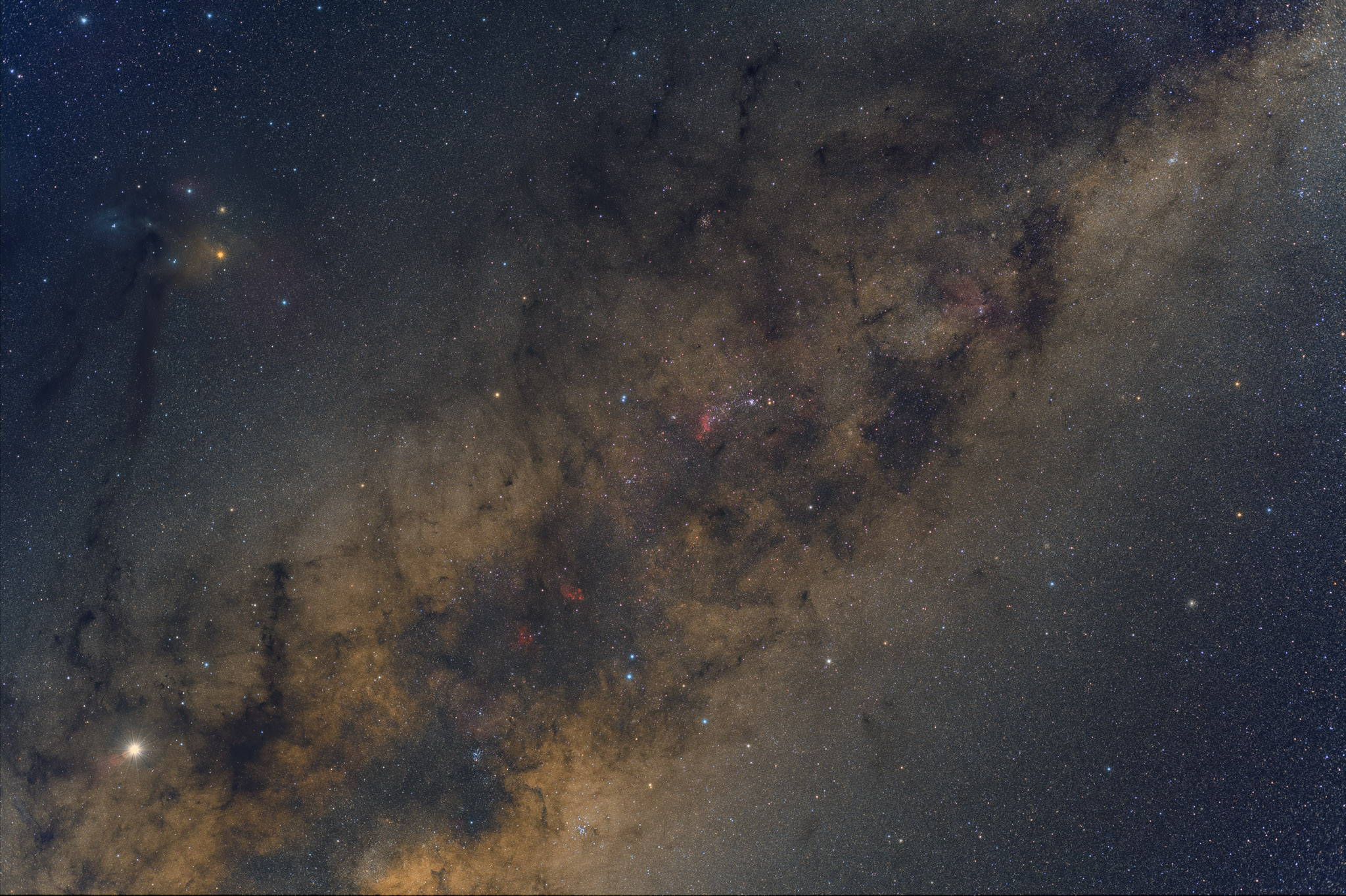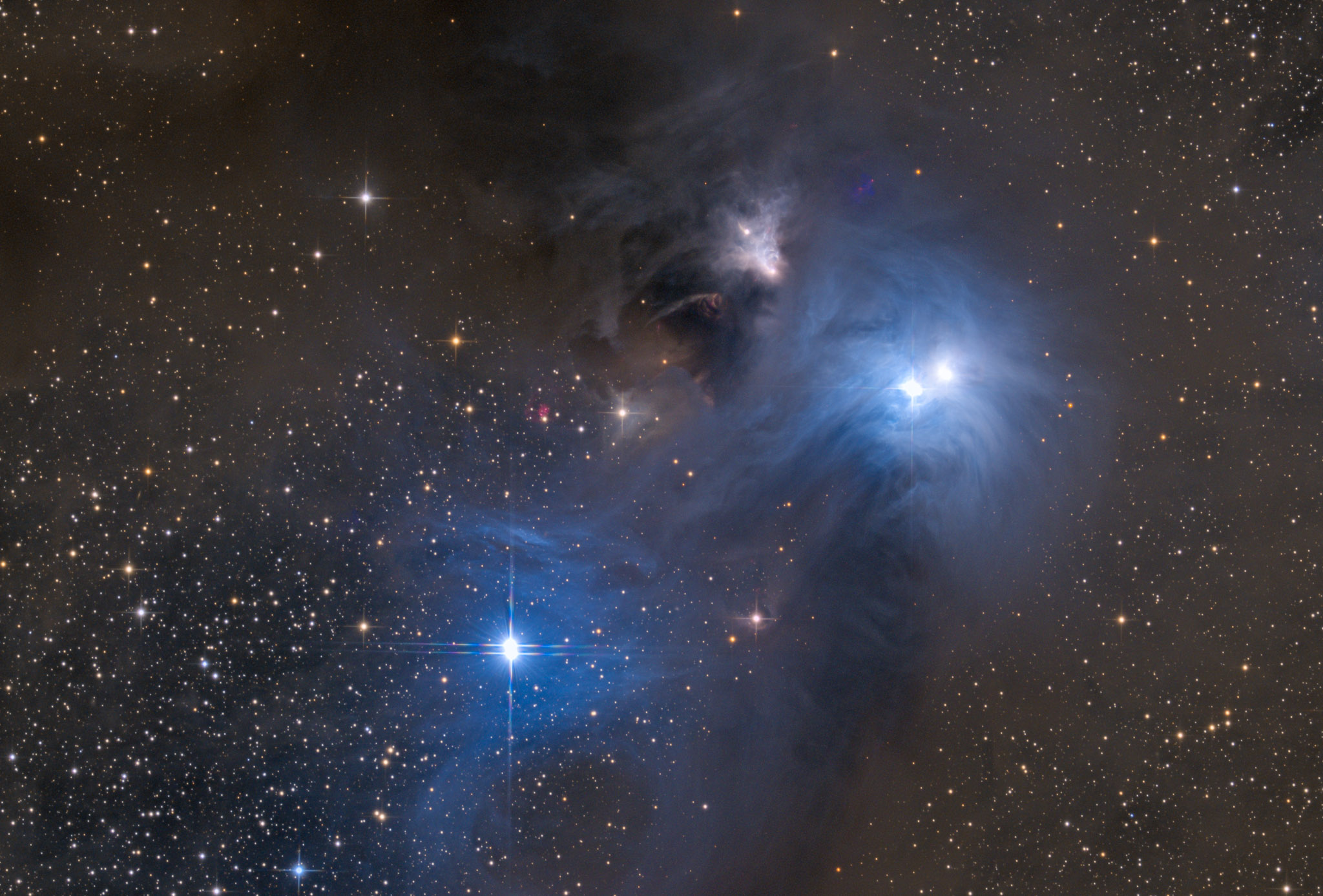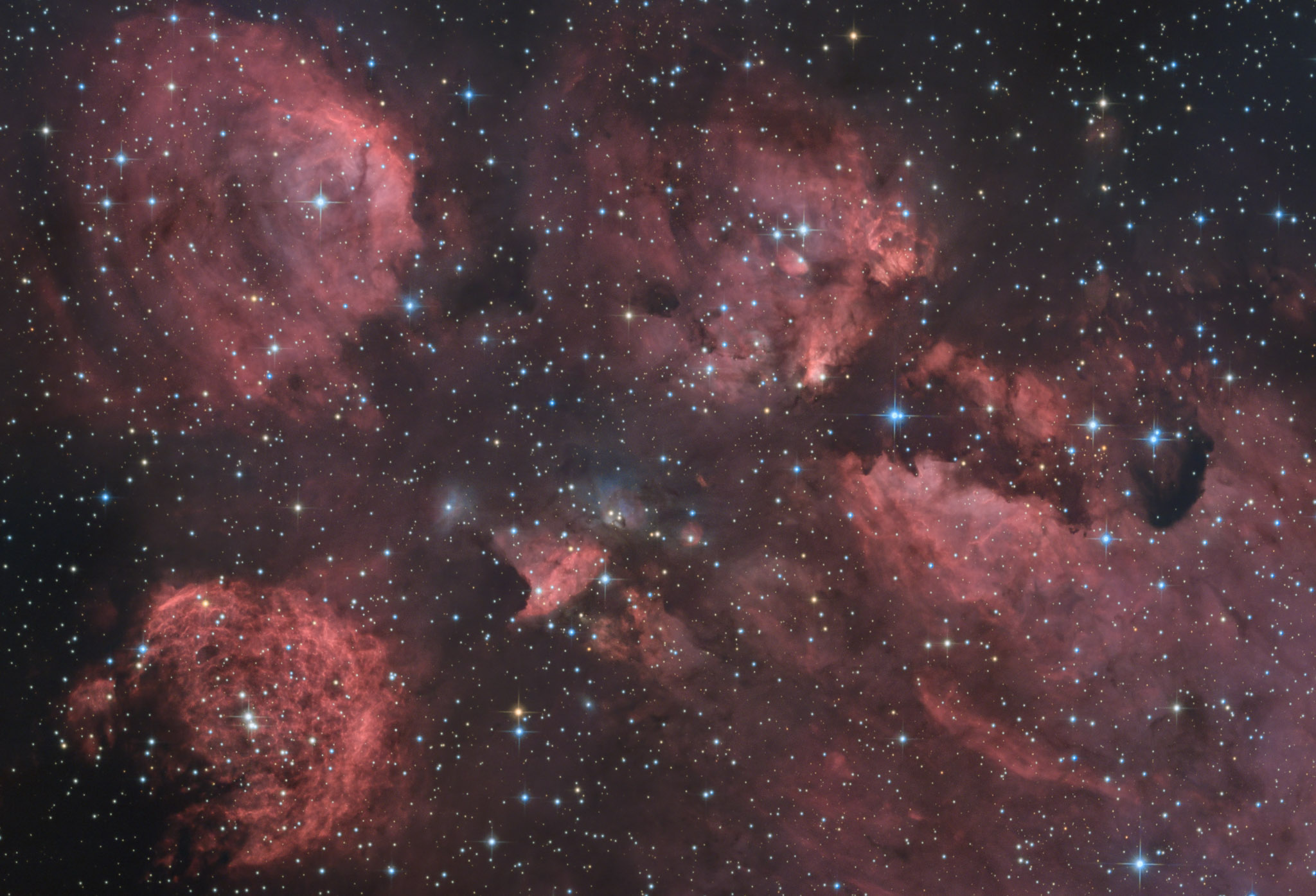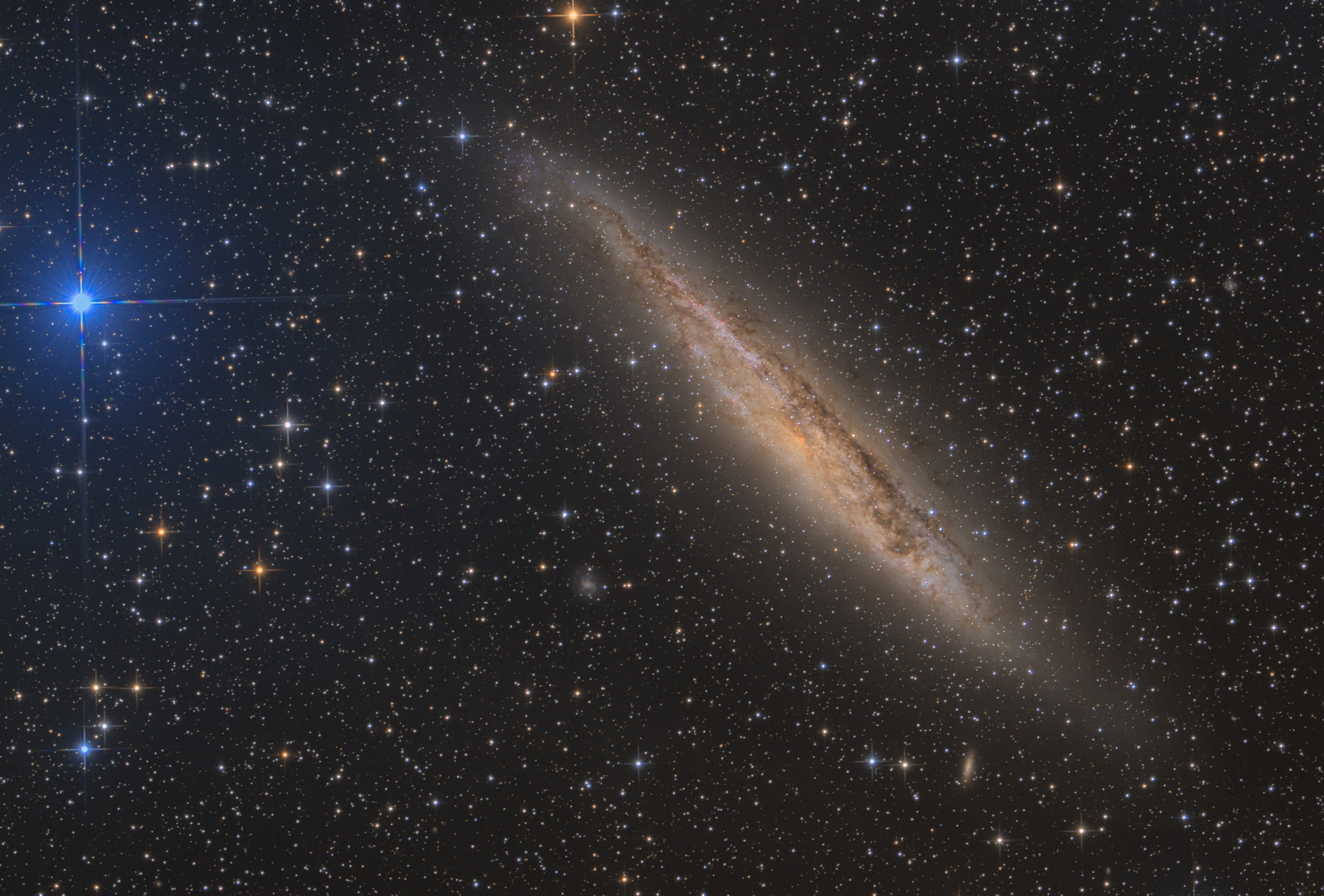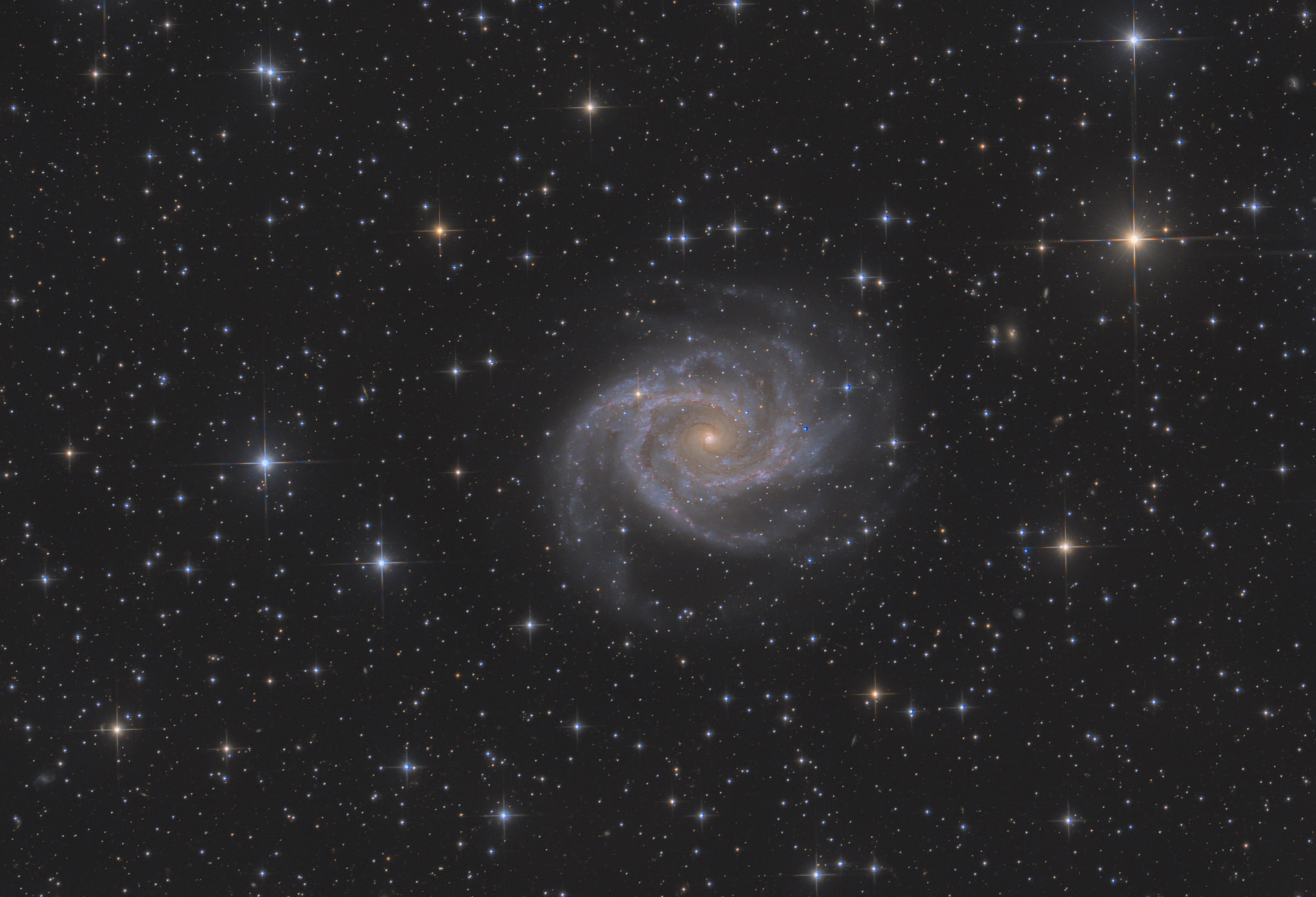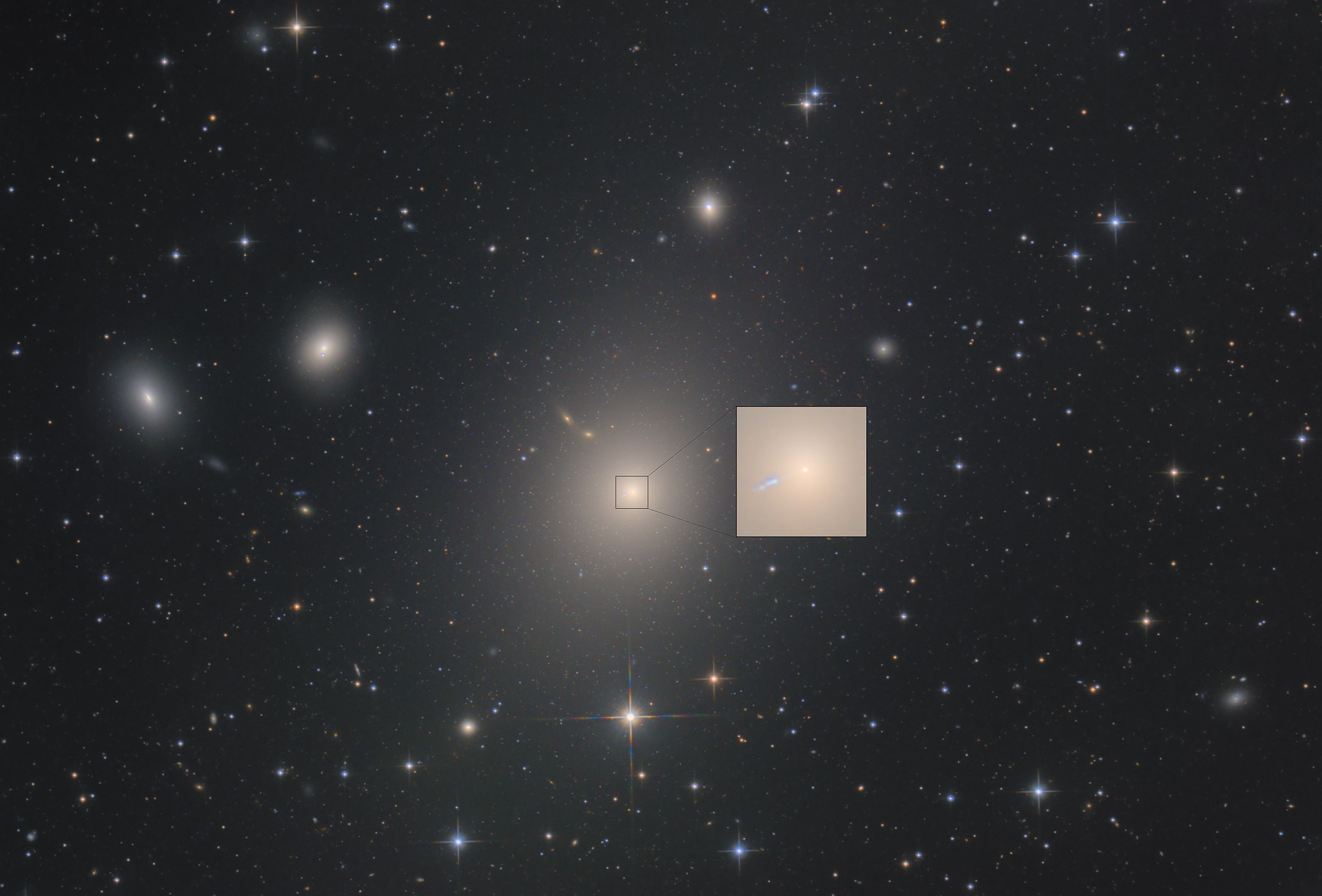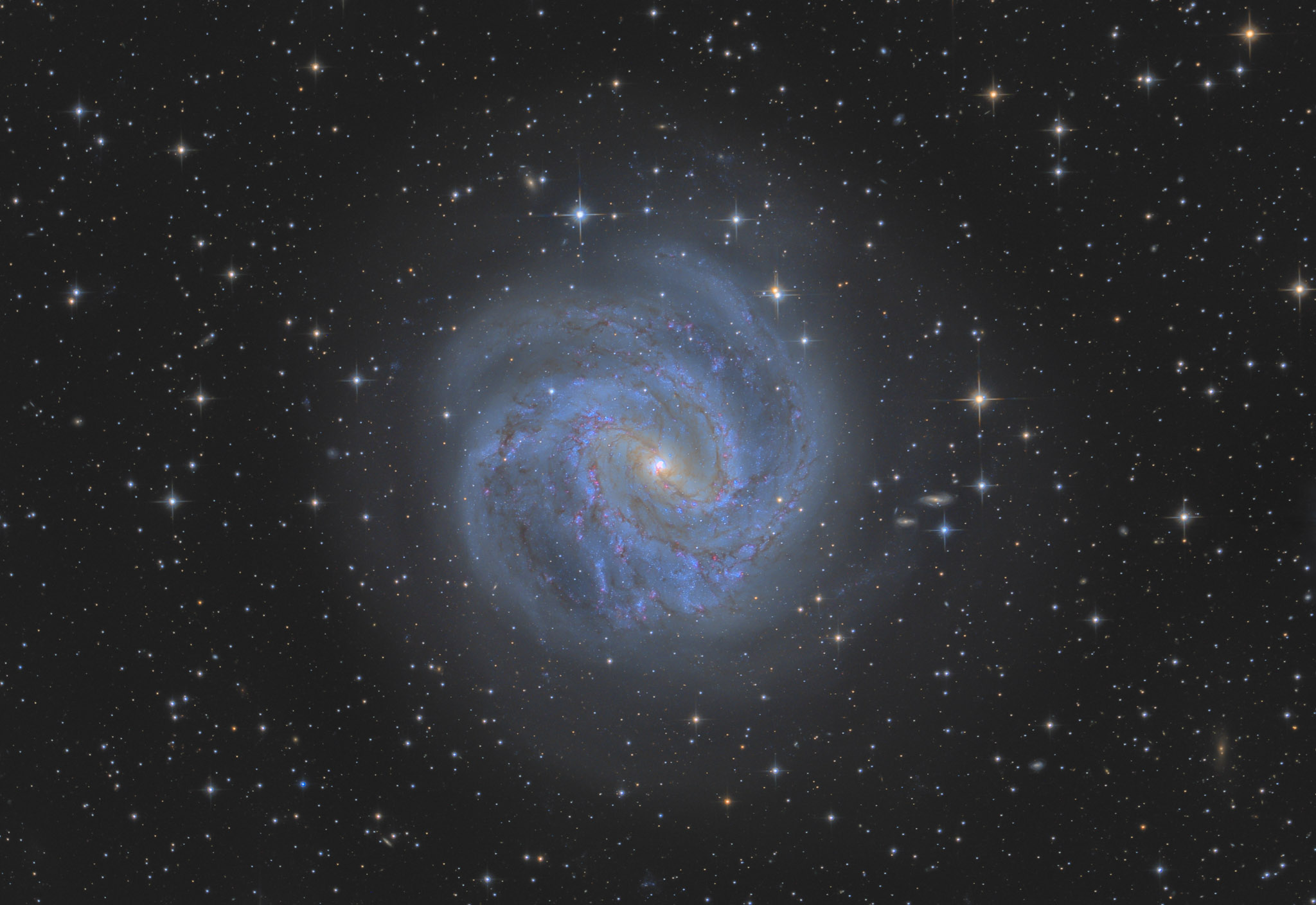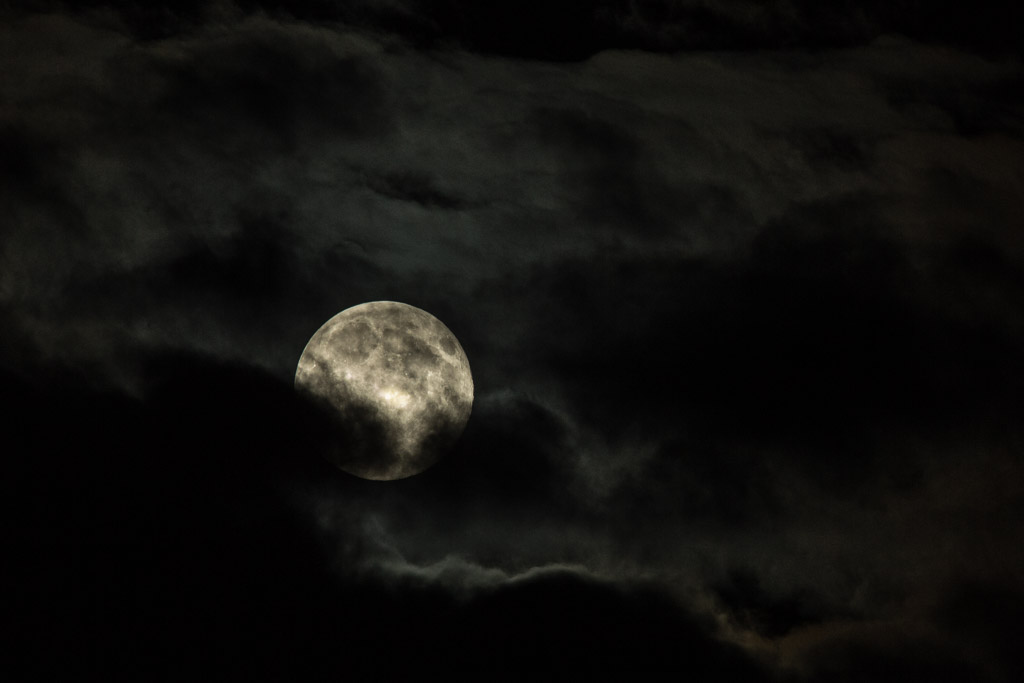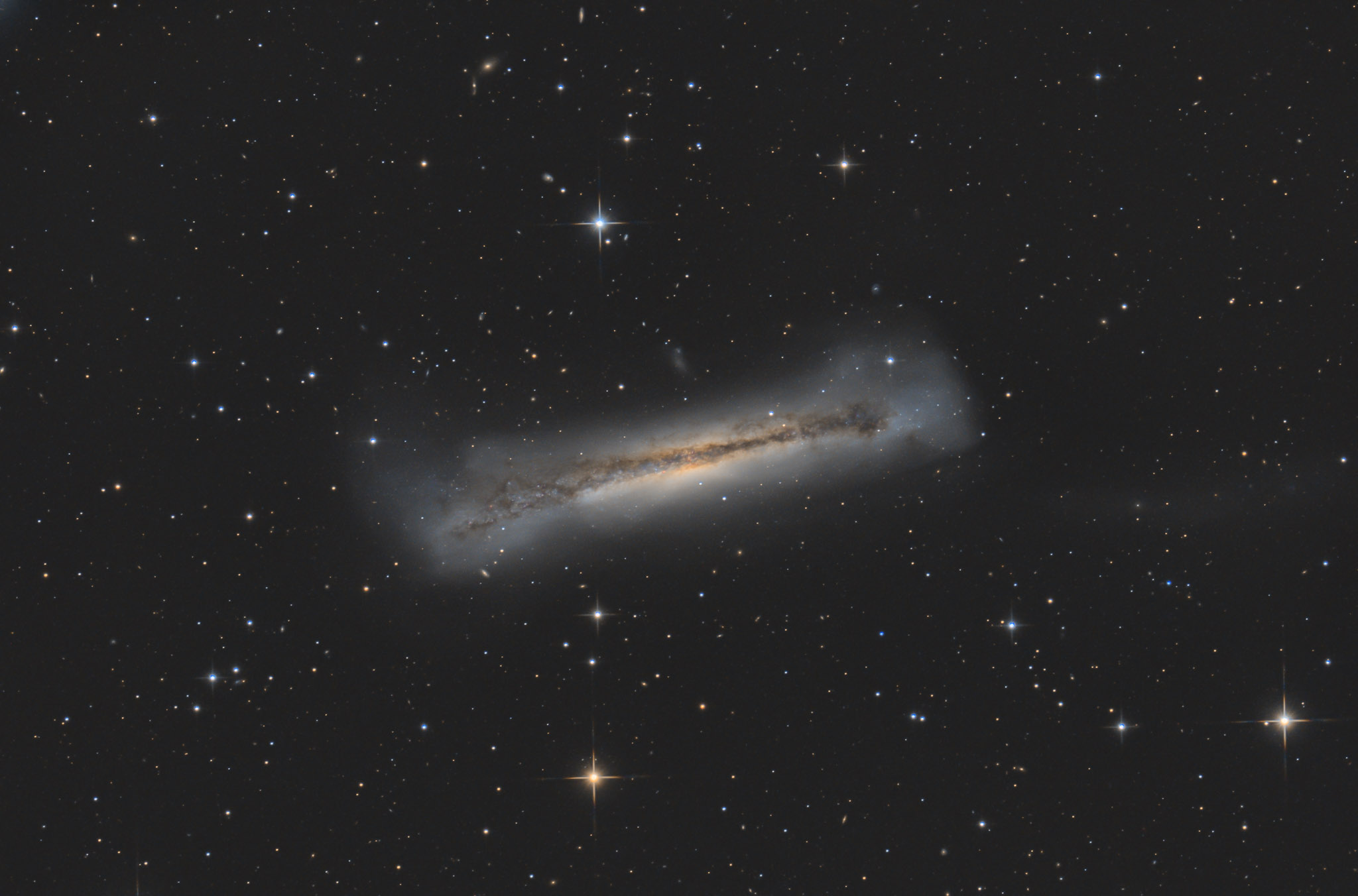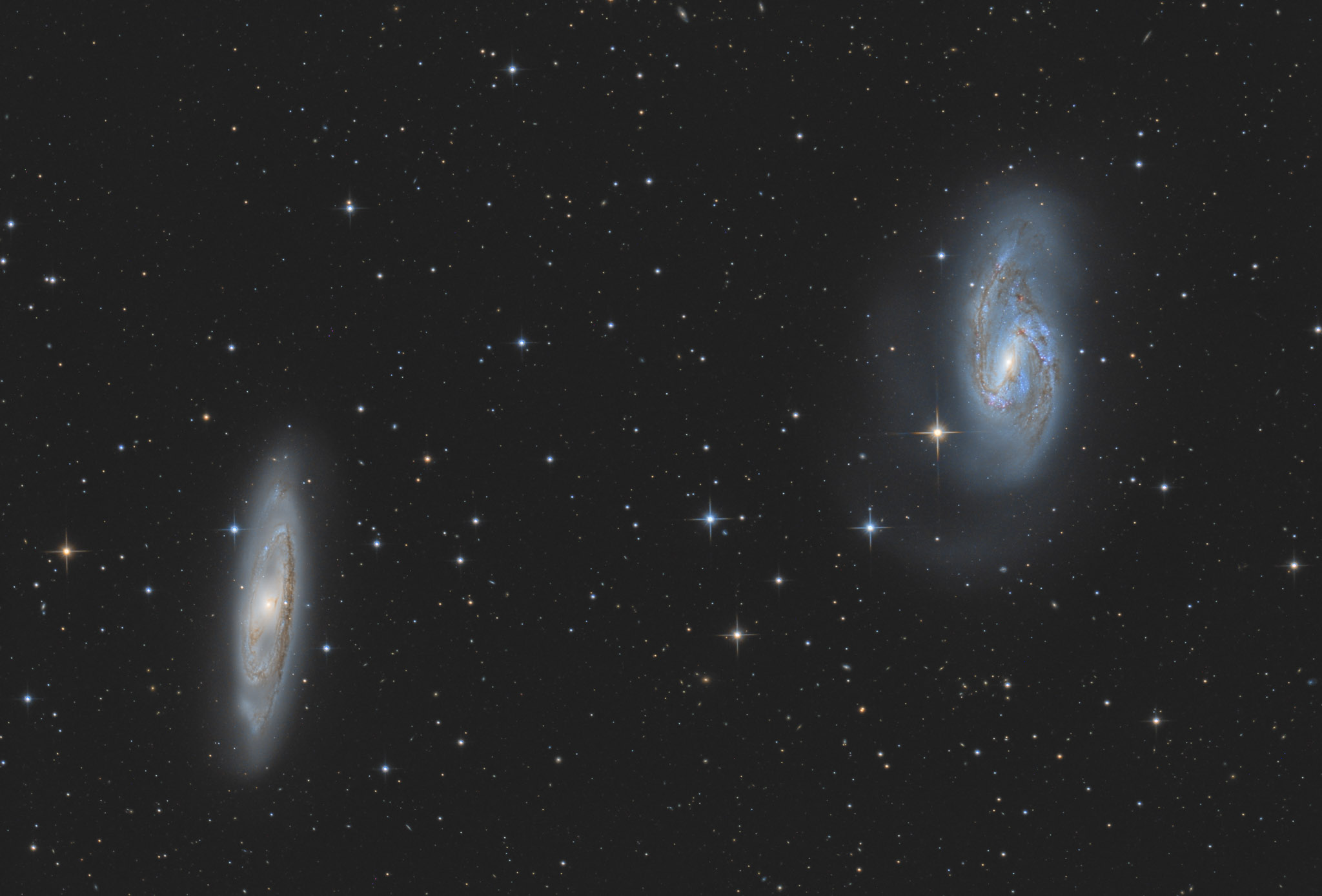Tag Archives: astronomy
NGC 6726/27/29 – Reflection Nebulae in Corona Australis
All details at Astrobin, Image of the Day 15 Aug 2019!
NGC 6334 – Cat’s Paw Nebula
NGC 6334 aka Cat’s Paw Nebula, an emission nebula and star-forming region in Scorpius.
(Updated version with improved colors, albeit a far cry from proper color calibration.)
All details at Astrobin.
Xi and NGC 4945 – Galaxy in Centaurus
NGC 4945, a barred spiral galaxy in the constellation Centaurus, vnear the star Xi Centauri.
All details at Astrobin.
NGC 2997 – Spiral Galaxy in Antlia
All details at Astrobin.
M87 – Supergiant Elliptical Galaxy
M87 aka Virgo A aka NGC 4486, a supergiant elliptical galaxy in Virgo. Recently, in April 2019, the Event Horizon Telescope project published the first direct image of (the shadow of) the supermassive black hole at the center. The cutout shows the blueish plasma jet emitted from the central black hole.
All details at Astrobin Image of the Day 01 Aug 2019 and the version with enlargement here.
M83 – Southern Pinwheel Galaxy
A southern hemisphere beauty, the massive, grand design spiral galaxy M83 aka NGC 5236 in Hydra.
All details at Astrobin.
Celebrating the Moon
Celebrating the 50th anniversary of Apollo 11’s moon landing with 14 years of earth-bound moon photography.
NGC 3628 Galaxy
NGC 3628, completing the Leo Triplet.
All details at Astrobin.
M65 / M66 Galaxies
Spiral galaxies M65 / NGC 3623 and M66 / NGC 3627, part of the Leo Triplet, the M66 Group.
All details at Astrobin.
